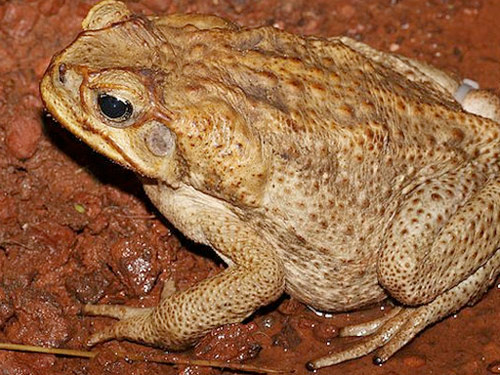
An invasive species of toad with mucus poison enough to kill small animals has been discovered in western New Providence.
The Cane Toad, which can produce around 30,000 eggs at once and possibly twice in its life cycle, was identified on August 8, 2013 by a Lyford Cay resident who then notified the Bahamas National Trust (BNT).
A Cane Toad responds to threat by turning side-on so its glands are directed towards the attacker. The poison usually oozes out of the glands, but toads can squirt a fine spray for a short distance if they are handled roughly.
Although the toad identified was captured and killed shortly afterwards, Minister of the Environment Kenred Dorsett said yesterday there were further sightings and possible breeding within the Lyford Cay pond.
Several biology websites have said the Cane Toad eats anything it can swallow including beetles, honey bees, ants, winged termites, crickets and bugs. Occasionally, it may consume marine snails, smaller toads, native frogs, small snakes, and small mammals.
The BNT said that if the toxin gets on the skin, an open wound or into eyes, seek medical attention.
For pets look out for drooling, head shaking, crying, loss of coordination and in more serious instances, convulsions.
The dog’s or cat’s gums often turn red which is an indicator used by veterinarians to distinguish toad poisoning.



